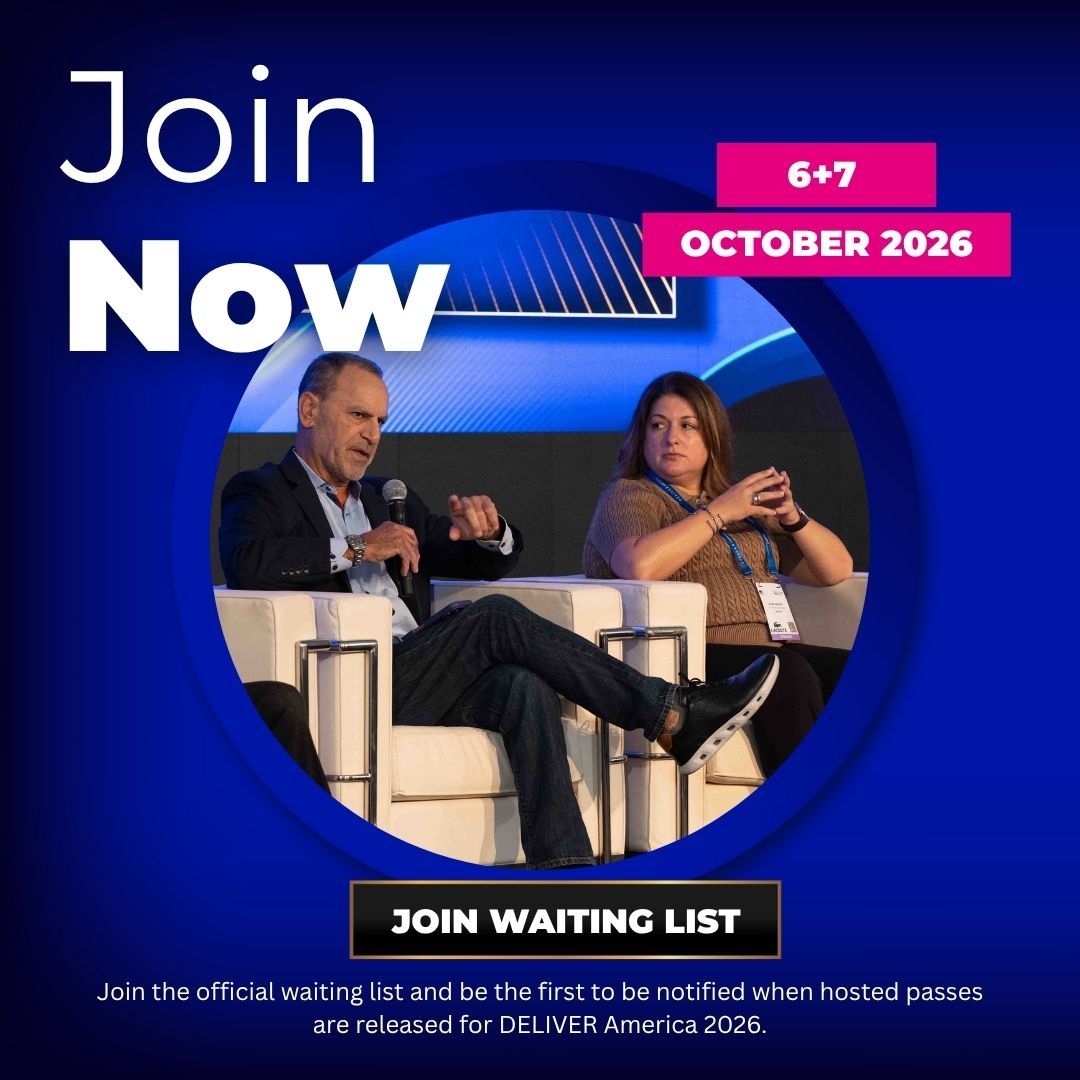Bonus Insights: Tony Sciarrotta – Executive Director & Publisher, Reverse Logistics Association
)
Tony Sciarrotta is Executive Director of the RLA (Reverse Logistics Association. He has held various industry positions, including 15 years in returns management at Philips, where he developed new reverse logistics strategies and worked with retail partners and industry groups on best practices.
He is an evangelist for improving the customer experience to reduce returns and their associated costs, and considered a subject matter expert in reverse logistics. He speaks for the industry at conferences all over the world.
The goal of the RLA is to educate and inform reverse logistics professionals globally and be the voice of the reverse industry. It offers information, research and solutions, and facilitates networking introductions for manufacturers, retail companies and third-party providers.
WATCH Tony’s DELIVER America 2023 Keynote: Tackling the ‘Returns Problem’ : the Industry and Ecological Crisis, and the Nightmare Beyond All Nightmares!
DELIVER:
To many consumers, there are parts of the returns experience which are extremely frustrating, such as not being able to access small replacement parts like laptop keys instead of having to send the entire unit back to the manufacturer. Why are these issues so much more complex than they seem?
Tony Sciarrotta:
Well, some people define customer satisfaction as “we'll just give you a replacement”. Some people define it as “we want to take care of you, whatever it takes”. You’ve pointed out that difference. I'll give you an example: I reached out to Philips, my old company, because I have a set of headphones called Fidelios. They were $600 headphones. And now they're 10 years old, but they no longer have the pad on top, and the leather’s breaking. So I was told, “Take a look online, and see what you can find.” And I think they could have gone further and pointed me directly to the company that offers those replacement parts, but I found them. And so consequently my $600 pair of headphones has been refurbished – by me personally.
So that's the key about circularity. And the manufacturers have to play in this world. Philips didn't have the foam pads, but I was able to find them, and that's because I took the time to be circular. So I really love companies that participate in that. And there's not enough of them. But they're starting to learn, because customer expectations drive the returns. Otherwise, what a waste of a product that works well except for one little piece, right?
DELIVER:
Could you talk a little bit about the ‘right to repair’ concept, and how that’s beginning to take hold in the USA now?
Tony:
We just had a White House presentation by Gay Gordon-Byrne, the advocate for right to repair, getting laws through that say you should have the right to buy that part, or get a replacement part. That’s something you’re already doing in Europe, so I'm glad to see the US paying attention.
The way I look at it, ultimately nobody talks about how we can reduce returns. We all talk about how to make reverse logistics smoother, faster, cheaper, easier. But we never talk about what you can do to make people love your product more, so that they buy what they need and not what they think they want.
I actually came out of sales and marketing. People who come out of service think about how we can fix something. People who come out of supply chain ask how we can move it. But people who come out of sales understand that it's a reverse sale, so how do you fix that sale? Not how do you fix the product itself, but how do you fix the experience? And so far, most of e-commerce’s solutions to fixing the experience are about making it easy to return.
Well, that's not the answer. The answer is to fix the experience. There's no-one in charge of returns at most companies, they attach it to supply chain. But it's not a supply chain issue. It's not a service issue. It's bigger than that. I wish I could say there's a lot of vice presidents of returns management or reverse logistics, but there’s not. And now the world is getting divided: the people who are involved in sustainability are sometimes being told to take care of returns as well, because ESG is now the big number, that's where return scores are buried. Nobody as a company reports on return rates. But the impact of returns falls into the environmental aspect of ESG. Because if you're taking things back, you're creating carbon footprints, you're subtracting from your profit and loss, because it costs more to take it back. And nobody looks at that as the business opportunity it actually is. I can't wait to hear about the first C-level person in a corporation in charge of returns management. That's what we need.
DELIVER:
What role can charities and NGOs play in ensuring greater circularity in the consumption cycle?
Tony:
I created a special program for nonprofit organizations such as Digitunity, Goodwill, Good360, EALgreen. These are all organizations that will take returns and do something good with them. Charities can help your company’s carbon footprint because that activity can count as carbon credits. But charities also protect your brand. They're not giving things away at a flea market, or a pawn shop, or online without credibility.
With services like Sharetown (who also presented at DELIVER America 23), Craigslist, eBay, and Facebook Marketplace, there can also be a revenue share concept. Look at consumer electronics: 50 million metric tons a year are being scrapped. If the consumer just finds they're not using it anymore, these products can be picked up across the country and done something with. One of our members has ‘hyperlocal’ as one of their missions. And so they'll pick up an appliance they delivered a week before that didn't work, store it locally, and let the manufacturer come up with the solution to whatever neighborhood it's in, rather than shipping it all the way back again. And by the way, shipping it back to the point where it started is always a bad idea. Because those people are only thinking forward. They don't know how to handle reverse. Nobody does end-to-end measurement of the returns costs. Otherwise, they could parcel it and say, “You know what, instead of shipping it to a liquidator, let's do something local.”
We learned that at Philips, where I was for 25 years. The returns warehouse had to be separated from the forward warehouse. Those people are used to handling nice clean boxes, and then they get this junk, and they turn it into more junk because they don't know how to handle it. So it's important to have the right partners.
DELIVER:
How can we bring about a shift in perspective in consumers too, so that the customer expectations you’ve talked about also include the consumers’ recognition of their own responsibility in the returns process?
Tony:
To reach consumers is a challenge. There's not a lot of education programs in any universities about reverse logistics. The RLA is in the process of building our education courses: short online videos that will allow you to learn about how to process returns. And then you can move out of a warehouse job into a returns management job.
For example, it's really tricky to learn how to polish lenses on a cell phone so that it looks like all the scratches are gone. That stuff is out there. But nobody really teaches it, except companies trying to make a buck. I'm really proud of our acquisition by the National Retail Federation. And they already have a foundation of education for entry level workers and managers in retail; they are about to include reverse logistics in the courses to be released next spring. So we will reach retailers. And at the end of the day, that's where the rubber hits the road: manufacturers work through retailers and retailers are the front line to the consumer.
But the fact is that anything that's been taken out of a box, seal broken, plugged in a wall, can no longer be sold as new. That's legislation. Maybe that legislation is getting in the way of making that secondary market that I talked about stronger. But it is what it is.
We need legislation to reduce returns, to make products easier to use, like the Repairability Index in France. If that was in a Best Buy or a Walmart store, or on the Amazon site, saying, “this product A is easier to repair than product B,” product A is going to start selling like crazy.And product B is going to say: “We need to fix things!”


